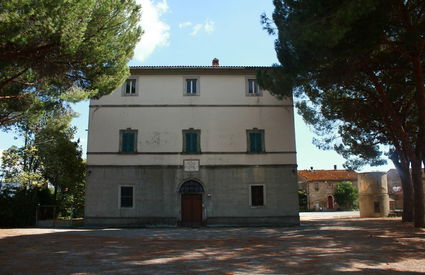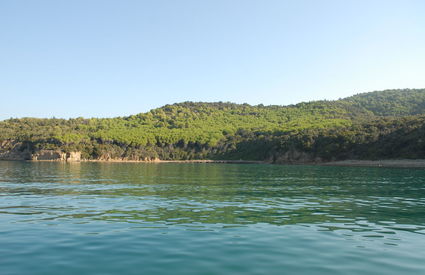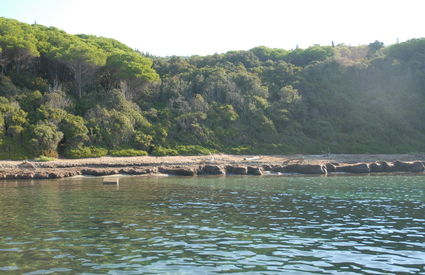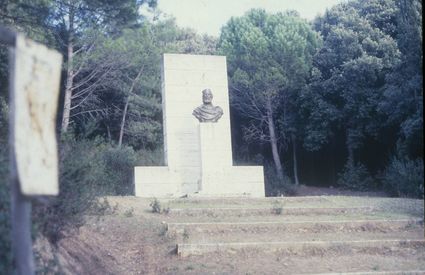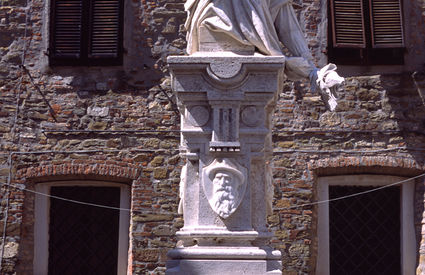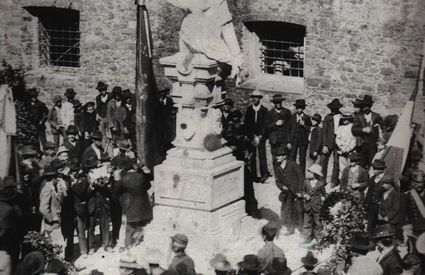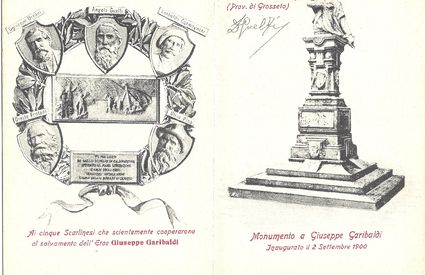Scarlino
Down but not out
A Garibaldi tour in Scarlino
Down but not out
A Garibaldi tour in Scarlino
From Palazzo Guelfi to Cala Martina
Day had not broken. A blond man with a messy beard and an air of melancholy barely visible on his indomitable face, walked the left bank of the Allacciante canal. Four people were with him, four locals from Scarlino and him an outsider.
To look at them you would have said they were hunters, ready for stakeout in the swamps. But once they had crossed the Fontino ditch, which led into the Allacciante, they did not turn for the swamps, instead continuing for the via della Dogana.
At a certain point the man
stopped, as if woken from a deep sleep, and he turned in the direction of a
solemn bell ringing.
“What village is that?” he asked his fellow walkers. “That’s Scarlino,
our town and that of our captain. If you wish, general, we can order them to
change the sound.” The man looked at him with a smile of both satisfaction and disappointment
and shook his head ever so slightly before starting to walk again.
It was 2 September 1849. Giuseppe Garibaldi had fled from Rome, won back by the Franco papal army a month before. He was headed for Venice, where the last Republican flame hung in the balance. The journey had been a tragic one. The few soldiers who had boarded the boat at Goro were lost. Garibaldi was left alone with Captain Leggero and his dying wife Anita, chased by Austrians and the secret papal police. Trusting in a few loyal friends, he decided to change destination, crossing into Tuscany and reaching Liguria by boat.
He was escorted by the ever
faithful Leggero and the Scarlinesi Leopoldo Carmagnini, Oreste Fontani,
Giuseppe Ornani and Olivo Pina,
the person who replied to Garibaldi that he would have altered the bells in contempt
of the hated conservative and papal forces. The architect of the escape through
Maremma was Angiolo Guelfi, the wealthy landowner, a Republican and
patriot, at whose country house Garibaldi had spent the night on the Scarlino
plain.
In Cala Martina, at 10am,
a fishing boat was waiting for them, which sailed them to safety in Liguria.
The Monument of the Pasquali brothers in Scarlino
On 2 September 1900, the episode was remembered with the monument with which the Scarlinesi wanted to pay tribute to Garibaldi and his rescuers. The statue was commissioned from a local workshop belonging to the Pasquali brothers, who also did well beyond Tuscany. (Vincenzo Pasquali also created the Spring Statue in Sanremo and the Monument to the Fall of Lyon).
The first member of parliament from Maremma in the history of Italy Ettore Socci unveiled the monument, holding an official speech before a joyous crowd.
Garibaldi appears young and handsome, a broken flagpole in his hand – down but not out – according to a very South American, not remotely Savoy-like iconography, to emphasize that Republican soul that still lived on in Scarlino.


